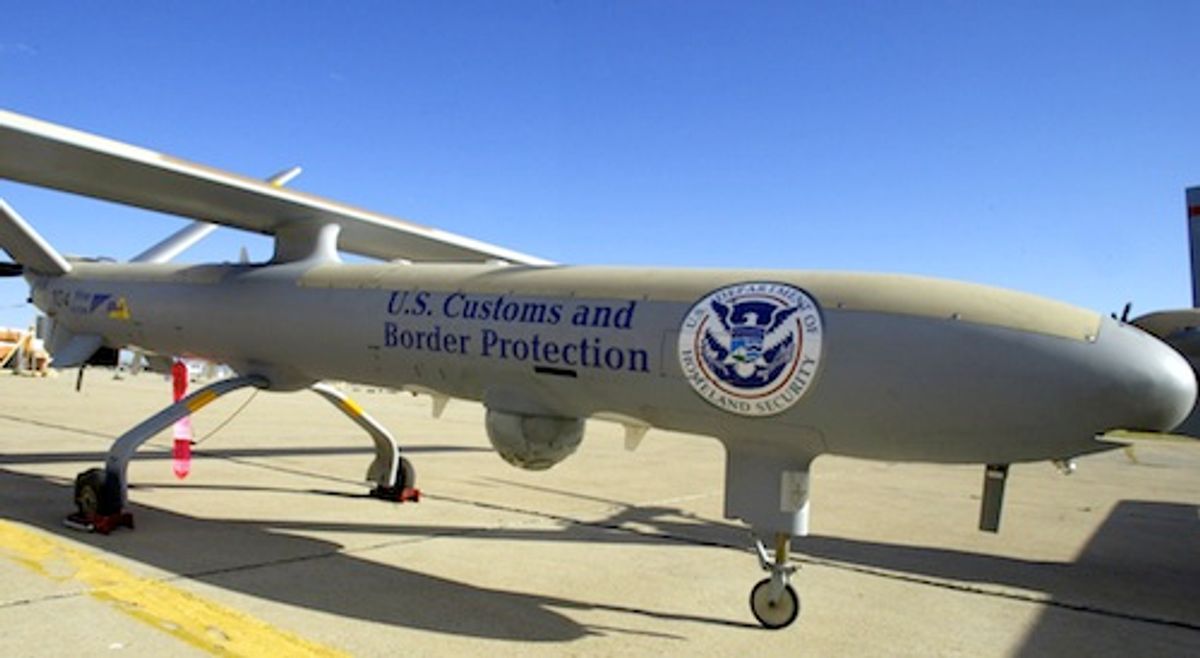It is refreshing to see left and right come together on anything at all, even if it’s just surveillance drones. We here at IEEE Spectrum call them unmanned aerial vehicles, or UAVs.
The initiator of this rare round of political comity is Charles Krauthammer, a right-leaning columnist who on Monday said on a Fox News television broadcast that he was going to “go all hard left on you; I’m going to go ACLU” in his opposition to UAVs. The American Civil Liberties Union is the preeminent leftwing organization opposing sweeping police powers.
People on the left have long criticized the federal government for using UAVs to target people accused of being terrorists overseas, something Krauthammer supports. But even many people not clearly on the left have voiced a qualm or two about using UAVs within U.S. borders to police traffic, catch runaway crooks, enforce curfew laws against teenagers, photograph people littering, and correct people’s posture.
Krauthammer went on to provide the money quote: “I would predict—I'm not encouraging, but I would predict—that the first guy who uses a Second Amendment weapon to bring a drone down that's hovering over his house is going to be a folk hero in this country.”
The Second Amendment to the U.S. Constitution states that “a well regulated militia being necessary to the security of a free state, the right of the people to keep and bear arms shall not be infringed.” Of course, when conservatives refer to this amendment, they’re not talking about state militias. Krauthammer doesn’t expect that hapless UAV to be blasted into scrap by the Texas Air National Guard’s fighter jets but by some guy with a shotgun.
Of course, “expecting” doesn’t mean “advocating.” Krauthammer is understanding such violencein advance; that way, he can’t be blamed for instigating it, any more than England’s King Henry could be blamed for the assassination of Thomas Becket when he asked his loyal minions, “who will rid me of this turbulent priest?”
Back in medieval England, plenty of people mourned that bit of, ah, central-government overreach. Today, though, only a roboticist would shed a tear in advance for the first domestic UAV to eat hot lead. Roboticists like the Association for Unmanned Vehicle Systems International (AUVSI).
Today AUVSI shed that tear, saying it could never “condone violence against technology intended to keep citizens safe while saving taxpayer dollars.” The AUVSI also cited all the good that civilian UAVs are doing and soon may do—keeping watch on the smoking ruins at Japan’s failed nuclear power plant in Fukushima, keeping track of endangered wildlife, and finding lost children.
That kind of do-goodism is the ticket to popular approval for the expansion of police powers, and the UAV industry knows it. In an interview with IEEESpectrum conducted shortly before his untimely death last year, Rodney Walker, a professor of electrical engineering at the Queensland University of Technology, in Brisbane, Australia, put the entire strategy into a Hollywood-style pitch: "We often talk about the 'save little Johnny' scenario, where no human-operated aircraft wants to go out in a terrible storm, so you send out robotic aircraft to save little Johnny, alone in the ocean.”
That will work spendidly. Unless Johnny’s got a gun.
Philip E. Ross is a senior editor at IEEE Spectrum. His interests include transportation, energy storage, AI, and the economic aspects of technology. He has a master's degree in international affairs from Columbia University and another, in journalism, from the University of Michigan.



